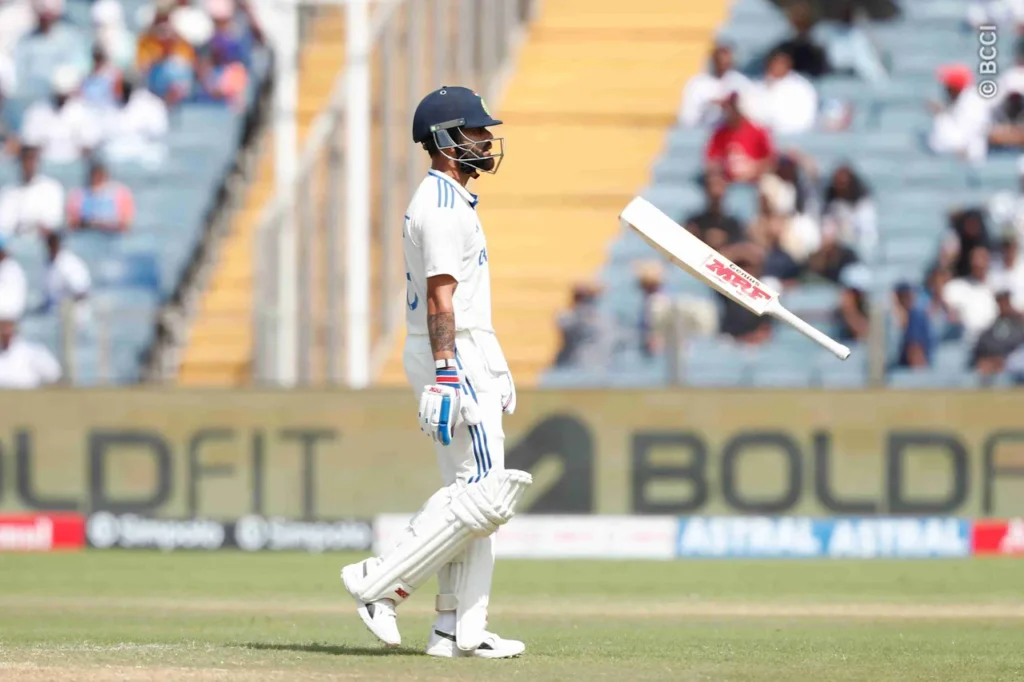India’s recent Test series loss to New Zealand has stirred up considerable discussion among fans and analysts alike. The two-match series, held in challenging conditions, revealed several key reasons where India struggled against the resilient and well-prepared New Zealand side. Here are the top 5 reasons India lost the series with an disappointing performance.
1. Inability to Handle Swing and Seam-Friendly Conditions
New Zealand’s pitches are known for their swing and seam, which made life difficult for the Indian batsmen. Indian players, accustomed to subcontinental pitches with low bounce and minimal movement, found it challenging to adapt to the fast, green pitches in New Zealand.
Swing Mastery of New Zealand Bowlers:-
- The Kiwi pacers, led by Matt Henry and Tim Southee, exploited the conditions expertly, making the ball move both in the air and off the seam. They kept the Indian top-order in check, consistently hitting good lengths that forced errors from even the most experienced Indian batsmen Like: Rohit sharma.
Lack of Preparation Time
- India had limited time to acclimate to New Zealand’s conditions, and their lack of proper preparation showed. While practice sessions can simulate game situations, there’s no substitute for real match-time exposure, which was sorely missing for the Indian squad.
2. Inconsistent Batting Performance
Indian batsmen, known for their technical finesse and resilience, struggled significantly throughout the series. The lack of big partnerships and inconsistent performances were major contributors to India’s downfall.
Top-Order Failures
- Indian openers and top-order batsmen failed to provide strong starts, with many dismissed cheaply in the early overs. This instability in the top order meant that the middle-order batsmen had to take on additional pressure, often leading to hurried and risky shots.
Inability to Score Big Runs
- In Test cricket, scoring 400+ runs in an innings is crucial, especially when conditions are tough. India’s inability to build substantial innings proved costly, as they ended up with below-par scores in both matches. Lack of century partnerships further emphasized the batting struggles that hindered India’s efforts to post competitive totals.
3. Limited Impact from the Spin Department
India is typically known for its powerful spin attack, with bowlers like Ravichandran Ashwin and Ravindra Jadeja often delivering match-winning performances on turning tracks. However, in New Zealand, conditions didn’t favor spin, limiting India’s effectiveness.
Pitches Favoring Pace Over Spin
- New Zealand’s pitches offered very little turn, especially in the second innings, where spinners often find more success. Indian spinners struggled to find their rhythm and couldn’t exert the same level of control or create wicket-taking opportunities.
Reduced Role of Spinners
- With pitches favoring seamers, the Indian spinners were relegated to a secondary role. They couldn’t make a significant impact when the pace attack was struggling, resulting in a lack of wicket-taking options for the captain, Virat Kohli.
4.Lack of Contributions from Key Players
In any high-stakes series, key players are expected to step up and deliver match-defining performances. Unfortunately for India, several of their mainstays were unable to contribute as expected.

Virat Kohli’s Struggles with the Bat
- As India’s captain and leading batsman, Virat Kohli’s form has a substantial impact on the team. However, in this series, Kohli struggled against New Zealand’s bowlers, failing to make the big scores fans and critics are used to seeing from him. His lean run in the series added pressure on the rest of the batting lineup, which lacked the experience to counter the Kiwi bowlers effectively which is the key reason for India lost test series at home.
Underwhelming Performances from the Bowling Attack
- Jasprit Bumrah, India’s star pacer, who is often the game-changer in overseas conditions, couldn’t find his usual rhythm or effectiveness. His inability to make early breakthroughs put additional pressure on the other bowlers, leaving New Zealand batsmen free to build large partnerships.
5. Poor Fielding and Missed Opportunities
Fielding is an integral part of any Test team’s success, as even small lapses can shift the momentum significantly in a match. Unfortunately, India’s fielding standards dropped during this series, leading to missed opportunities.
Dropped Catches
India’s fielders missed several crucial catches, allowing New Zealand’s batsmen to extend their innings and build confidence. In Tests, dropped catches often have a ripple effect, letting opponents capitalize on these lapses, as was evident in the lengthy partnerships New Zealand forged after India’s fielding errors.
Sloppy Ground Fielding are also Part of reasons why india lost series
India’s ground fielding also seemed lackluster, with misfields giving away extra runs, which proved costly in closely contested sessions. These additional runs eased the pressure on the New Zealand batsmen and contributed to India’s inability to contain the opposition’s scoring
Conclusion
Here,key reasons for India lost series at home against New Zealand serves as a reality check for the Indian team, emphasizing the need for better preparation and adaptability, especially when playing in unfamiliar conditions. With a few strategic adjustments and the resolve to address their weaknesses, India can bounce back and regain their competitive edge in overseas Test series. Future tours to swing-heavy regions like New Zealand will require India to have versatile strategies in place to counter these conditions effectively.
If you are interested you can see our more blogs :- https://stockylog.com/best-beard-growth-oils-for-men/
